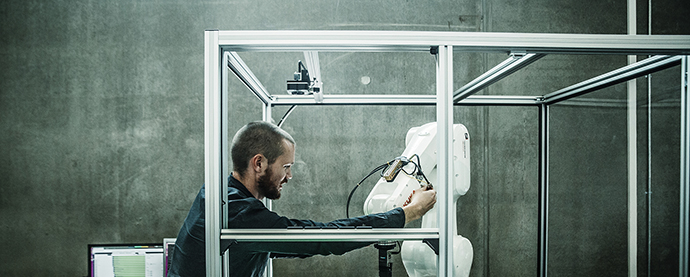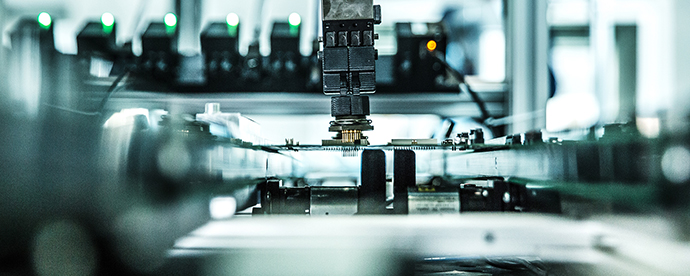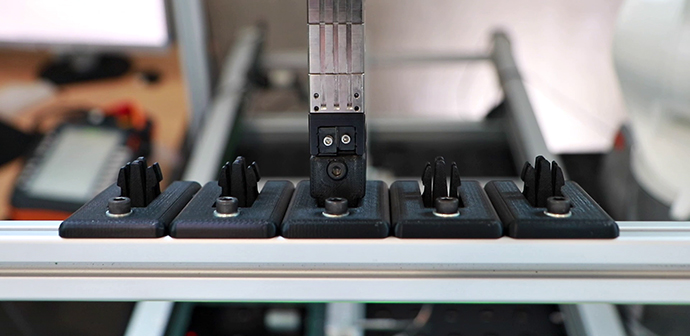Cross-border collaboration with robots gives Weibel ideas for automation
The electronics industry has long been characterised by very high production runs. However, several European electronics manufacturers also have a need to produce small series sizes. This challenge has been solved across national borders in the European project ROBOTT-NET.
The world's leading manufacturer of Doppler radars, Weibel Scientific - together with the Danish Technological Institute (DTI) in Odense, the Manufacturing Technology Centre (MTC) in the UK and the Danish systems integrator Technicon - worked on a flexible robotic system that can take an assortment of the most common electronics components, grasp them with accuracy and insert them correctly into circuit boards.
- There are many other European electronics manufacturers who have a need to produce small series sizes, and there are no automatic solutions available, says Mikkel Rath Hansen, Product Manager at DTI.
Morten Glad Steinmeier, Electronics Production and Quality Manager at Weibel Scientific, says the collaboration with the various partners has helped accelerate the process.
- The partners in the project have prevented us from taking some wrong turnings, and this has reduced experimentation time and helped us to get further, he says.
At the same time, the collaboration has given Weibel Scientific a number of good ideas.
- We have noticed that there are several things that can be automated, Morten Glad Steinmeier elaborates.
Cross-border contributions
Cooperation across countries has meant that more competencies have been available to devise the solution. Technicon has developed a finger system for the flexible robotic solution.
- The challenge has been that we had too many different items for it to be viable to change grippers every time you had to deal with a new one, explains Asger Bloksma Krogstrup, Project Manager at Technicon, adding:
- The way we have approached this challenge is that we developed a system that allows you to switch between different gripper fingers without changing the robot gripper itself – it's a bit like the belt buckle on a backpack.
British Manufacturing Technology Centre (MTC) has contributed to the project by making some advanced assessments in relation to identifying which technologies are available in the market.
- It helped us find the gaps in the industry and identify where we can contribute the most, says Sharan Kaur, Senior Robotics and Control Engineer at MTC. She calls the collaboration of the partners involved inspiring:
- Cross-border collaboration allowed us to work with partners who have interests in common but different areas of expertise. This meant that we got the most out of our projects by learning from each other, and we gained new skills that we can use in other projects, she says.
- I think ROBOTT-NET has been good at breaking down boundaries, and it's just inspiring to talk to other engineers who are tech-savvy, concludes Sharan Kaur.
In the video below you can see a more technical review of the new robot system and get good ideas on how to make your robotic solution flexible.